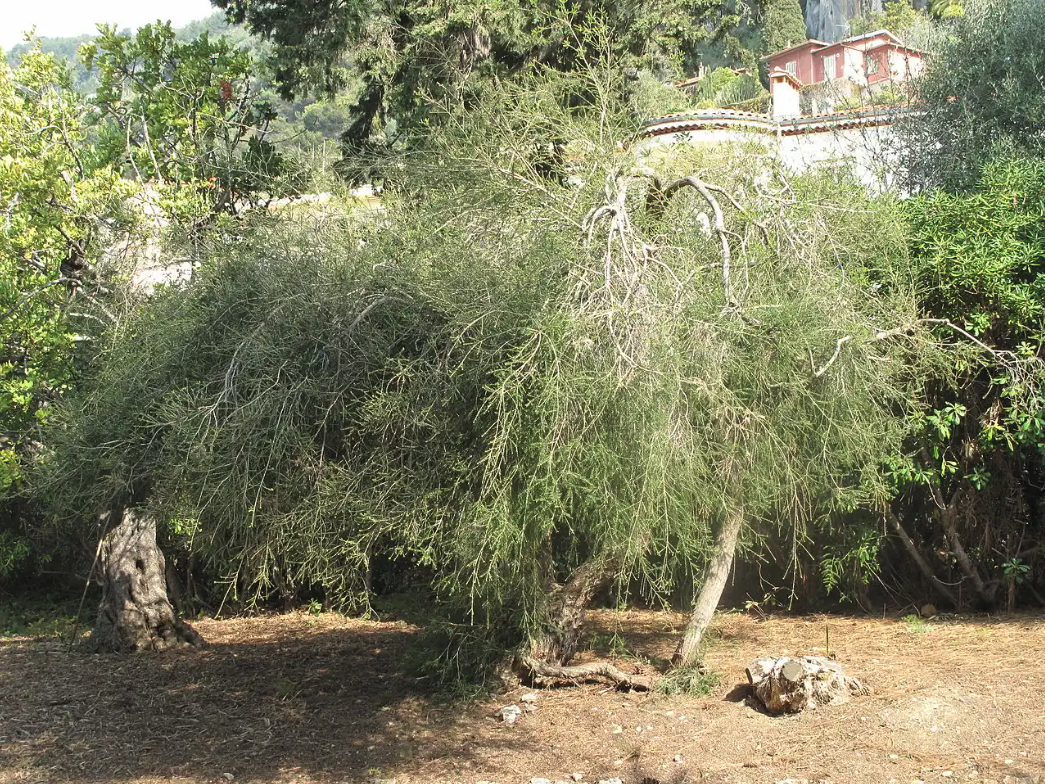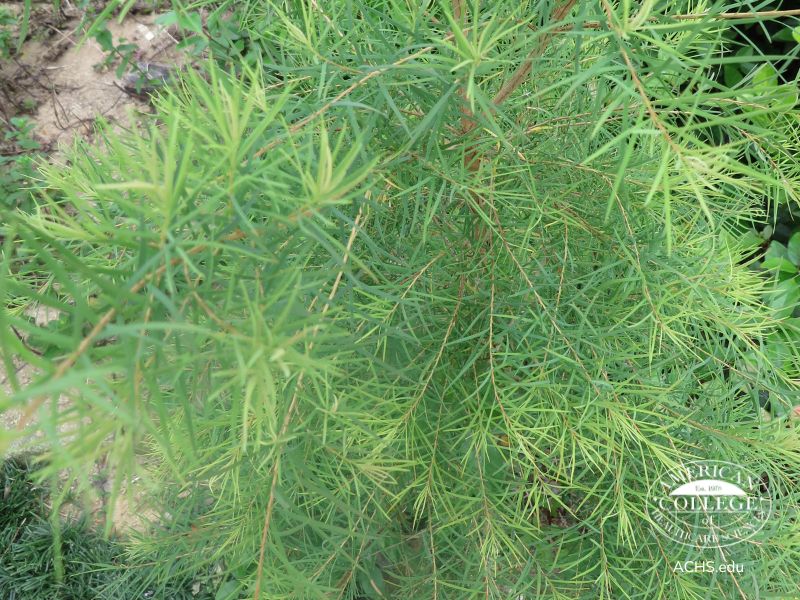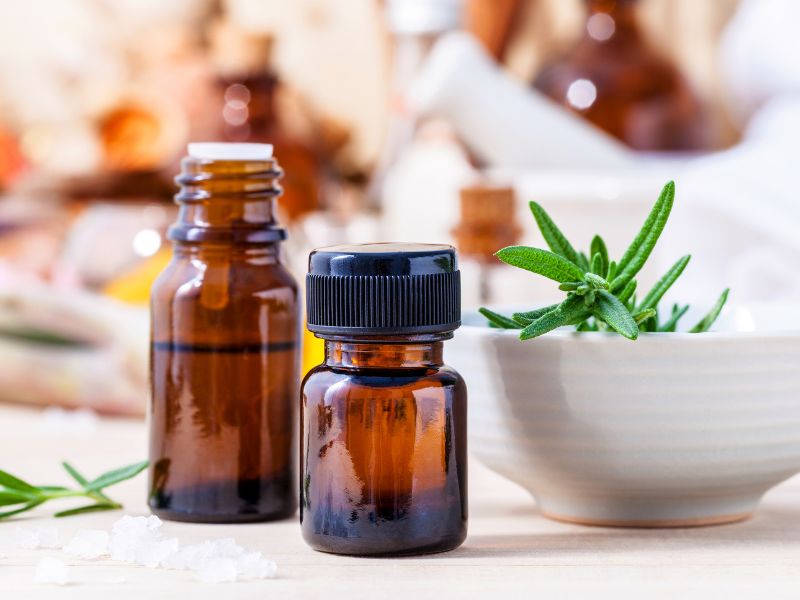This ACHS Wellness Wire presents important regulatory and scientific updates for Tea Tree oil Melaleuca alternifolia.
Written by ACHS Founding President Dorene Petersen and ACHS Dean of Aromatherapy Amanda Lattin. Image above: Australian tea tree growing in South Korea. © 2014 Dorene Petersen.
Tea Tree Oil Classified as a Category 1B Reproductive Toxicant
The European Chemicals Agency (ECHA)1 Risk Assessment Committee (RAC) has classified tea tree oil Melaleuca alternifolia as a Category 1B reproductive toxicant under the EU Classification, Labelling, and Packaging (CLP) regulation. This designation reflects significant concerns about its potential effects on reproductive health.
The RAC acknowledged in vitro studies showing differences in how a para-cymene (p-cymene) metabolite accumulates in rats versus humans, highlighting species-specific variations. The RAC acknowledged that there are no epidemiological studies on humans regarding tea tree oil’s reproductive toxicity. The existing evidence is based solely on animal studies.

Background: What is para-cymene (p-cymene)?
Para-cymene is a plant metabolite which falls under the category of monoterpenes. Para-cymene is present in varying concentrations in the essential oil of several types of aromatic plants.2 It is also present in small amounts in foods such as carrots, orange juice, grapefruit, tangerine, and raspberries.3 Research examining the therapeutic effects of p-cymene in several essential oils has found it to have anti-inflammatory, anti-tumor, antinociceptive, anti-viral, anti-bacterial, and antifungal effects. Research has also shown p-cymene to have beneficial effects on gut microflora populations.4
Safety Considerations for Para-Cymene
It’s also important to note safety considerations for p-cymene. P-cymene has been restricted or banned by the European Union (EU) under Regulation (EC) No 1272/2008 (CLP Regulation) due to its potential health risks, particularly its classification as a skin sensitizer and possible respiratory irritant. This has led to increased scrutiny of essential oils containing p-cymene. In addition to tea tree oil Melaleuca alternifolia, Manuka essential oil (Leptospermum scoparium or Tea Tree New Zealand) also contains p-cymene.
Important notes for Manuka:
- Para-cymene is consistently identified as a minor to moderate component of Manuka essential oil.
- Reported concentrations range from 1% to 8%, depending on factors such as plant origin, extraction method, and environmental conditions.
- The variability in p-cymene levels underscores the importance of using GC/MS analysis to verify the composition of specific batches of Manuka essential oil.
While older studies have established the presence of p-cymene in Manuka essential oil, more recent research has focused on understanding its variability, safety, and compliance with EU regulations.
Implications Under EU Cosmetics Regulation (EC) 1223/2009
 Tea tree oil’s new classification as a Category 1B reproductive toxicant has broad regulatory implications. According to Article 15 of the EU Cosmetics Regulation [(EC) 1223/2009]5, substances classified as carcinogenic, mutagenic, or reprotoxic (CMR) in the EU CLP regulation are prohibited in cosmetics unless:
Tea tree oil’s new classification as a Category 1B reproductive toxicant has broad regulatory implications. According to Article 15 of the EU Cosmetics Regulation [(EC) 1223/2009]5, substances classified as carcinogenic, mutagenic, or reprotoxic (CMR) in the EU CLP regulation are prohibited in cosmetics unless:
1. Industry members secure exemptions by demonstrating safe use through rigorous scientific criteria.
2. These exemptions align with specific provisions of the regulation to ensure consumer safety.
Image by Tangopaso, Public domain, via Wikimedia Commons.
Without exemptions, all affected tea tree oil products must be reformulated or withdrawn from the market within 15 months.
Impacts on Household Products and Broader Markets
The new restrictions also extend to household products within the EU. Tea tree oil will be limited to a concentration of less than 0.3% in final formulations. The regulatory changes could impact the use of other essential oils with similar chemical profiles, particularly those containing p-cymene, which may face additional scrutiny or restrictions in the future.
What’s next for other markets?
In the UK: The UK operates under a different regulatory framework than the EU and has not yet implemented a ban on tea tree essential oil. The Health and Safety Executive (HSE) conducted its own assessment and overall disagreed with RAC’s findings, specifically that it may cause drowsiness or developmental toxicity for the unborn.6 The HSE report was published in August 2024, with a determination expected within 12 months of the report’s publication. As of February 2025, a final determination has not been issued.
(HSE) conducted its own assessment and overall disagreed with RAC’s findings, specifically that it may cause drowsiness or developmental toxicity for the unborn.6 The HSE report was published in August 2024, with a determination expected within 12 months of the report’s publication. As of February 2025, a final determination has not been issued.
Image right: Australian tea tree growing in South Korea. © 2014 Dorene Petersen.
In the U.S.: Companies subject to The Modernization of Cosmetics Regulation Act of 2022 (MoCRA) should continue to review the standards for substantiating the safety of products containing tea tree oil under the Act.
Asia-Pacific Region: It does not appear that this region has taken specific measures yet to act on the EU’s tea tree ban. The Australian Tea Tree Industry Association (ATTIA) is actively challenging the EU’s proposed classification, emphasizing the importance of tea tree oil in various industries. The ATTIA published an issue brief available here: www.attia.org.au/news/eu-issue-brief
It’s important to note that the implications of a total ban or stricter limits on tea tree oil could ripple across industries, with significant economic and regulatory consequences for manufacturers and suppliers.
Essential Oils Containing Up to 8% p-Cymene
| Essential Oil | Botanical Name | Para-Cymene Content (%) |
|---|---|---|
| Cumin Oil | Cuminum cyminum | 5-8% |
| Thyme Oil | Thymus vulgaris | 1-8% |
| Caraway Oil | Carum carvi | 2-8% |
| Coriander Seed Oil | Coriandrum sativum | Varies |
| Eucalyptus Oil | Eucalyptus spp. | 5-8% |
| Tea Tree Oil | Melaleuca alternifolia | 3-8% |
| Tea Tree New Zealand Oil (Manuka) | Leptospermum scoparium | 1-8% |
| Marjoram Oil | Origanum majorana | Up to 6-8% |
Global Market: Differing Opinions
Despite regulatory shifts in the EU, the global market still generally considers tea tree oil safe for cosmetic and personal care use when formulated appropriately. Key market insights include:
- Consumer Perception: Tea tree oil remains a trusted natural ingredient in skincare, haircare, and therapeutic formulations due to its antimicrobial and anti-inflammatory properties.
- Industry Response: Many cosmetic and personal care brands outside the EU continue to use tea tree oil within recognized safe limits. In markets like the U.S., Australia, and Asia, tea tree oil is widely accepted in cosmetics, personal care, and wellness products. Geraldine Garrs, an independent cosmetics safety assessor, was quoted in Chemistry World and shared, “Reprotoxicity is highly impactful, so you don’t want to take any chances. But we’ve been using tea tree oil under a safe dose rule for a long time, and if the industry wanted to defend that, I would support it.”7
- Scientific & Regulatory Divergence: While the EU has introduced restrictions, countries such as the U.S. (FDA) and Australia (TGA) have not imposed similar bans on tea tree essential oil. This does not mean that labeling or other substantiation requirements may be required, but overall these nations have not taken steps to ban tea tree essential oil.
- Future Outlook: Some industry stakeholders are exploring reformulation strategies to ensure compliance while maintaining the efficacy of tea tree oil products. Others are actively engaging in regulatory discussions to challenge the new classification based on scientific discrepancies between animal and human data. The consensus is that safe dilution rates and appropriate use are at the heart of continuing to use tea tree essential oil safely, as with all product ingredients.
Conclusion
The recent developments highlight the evolving regulatory landscape for essential oils, particularly those containing potentially toxic constituents like p-cymene. Stakeholders in the cosmetics, household products, and essential oils industries should closely monitor these changes and proactively adapt to ensure compliance and consumer safety.
About the ACHS Wellness Wire
At ACHS, our mission is to lead the advancement of evidence-based integrative health and wellness education through experiential online learning and sustainable practices. As part of our mission, ACHS publishes Wellness Wire updates, including important research developments, safety information, industry insights, and other news to keep health and wellness professionals up-to-date on the latest developments in our industry. Subscribe to the blog to receive the latest news.
Sources:
- European Chemicals Agency (2025, January 30). One health: EU agencies unite to tackle azole fungicide resistance in Aspergillus fungi. https://echa.europa.eu/
- Api, A. M., Belsito, D., Biserta, S., Botelho, D., Bruze, M., Burton, G. A., Jr, Buschmann, J., Cancellieri, M. A., Dagli, M. L., Date, M., Dekant, W., Deodhar, C., Fryer, A. D., Gadhia, S., Jones, L., Joshi, K., Kumar, M., Lapczynski, A., Lavelle, M., Lee, I., … Tokura, Y. (2021). RIFM fragrance ingredient safety assessment, p-cymene, CAS Registry Number 99-87-6. Food and Chemical Toxicology : An International Journal Published for the British Industrial Biological Research Association, 149 Suppl 1, 112051. https://doi.org/10.1016/j.fct.2021.112051
- Balahbib, A., El Omari, N., Hachlafi, N. E., Lakhdar, F., El Menyiy, N., Salhi, N., Mrabti, H. N., Bakrim, S., Zengin, G., & Bouyahya, A. (2021). Health beneficial and pharmacological properties of p-cymene. Food and Chemical Toxicology : An International Journal Published for the British Industrial Biological Research Association, 153, 112259. https://doi.org/10.1016/j.fct.2021.112259
- Jin, H., Leng, Q., Zhang, C., Zhu, Y., & Wang, J. (2021). P-cymene prevent high-fat diet-associated colorectal cancer by improving the structure of intestinal flora. Journal of Cancer, 12(14), 4355–4361. https://doi.org/10.7150/jca.57049
- UNION, P. (2009). Regulation (EC) No 1223/2009 of the european parliament and of the council. Official Journal of the European Union L, 342(59).https://health.ec.europa.eu/system/files/2016-11/cosmetic_1223_2009_regulation_en_0.pdf
- Health and Safety Executive. (2024, August). Agency technical report on the classification and labelling of Melaleuca alternifolia, ext [1] Melaleuca alternifolio, essential oil; tea tree oil [2]. [PDF]. https://www.hse.gov.uk/chemical-classification/assets/docs/mcl-aaqd-0684.pdf
- Zainzinger, V. (2024, September 2024). Tea tea oil faces ban in UK and EU over reprotoxicity. Chemistry World. https://www.chemistryworld.com/news/tea-tree-oil-faces-ban-in-uk-and-eu-over-reprotoxicity/4020140.article




